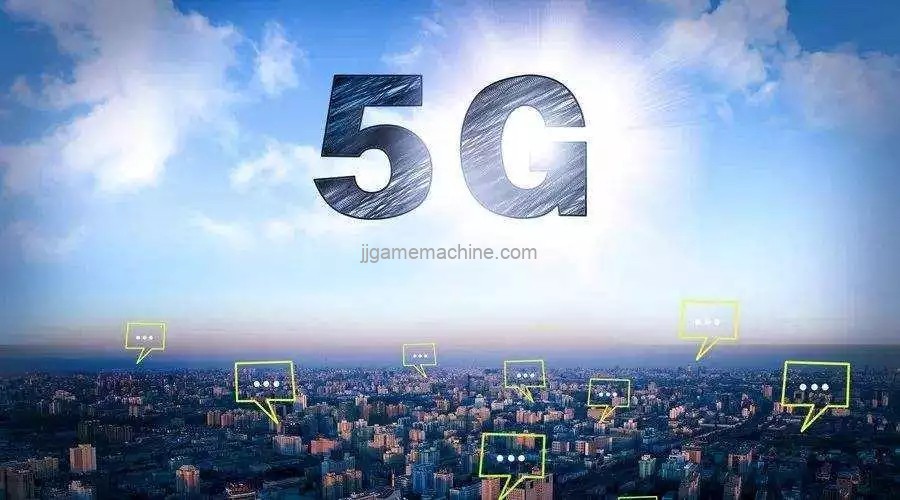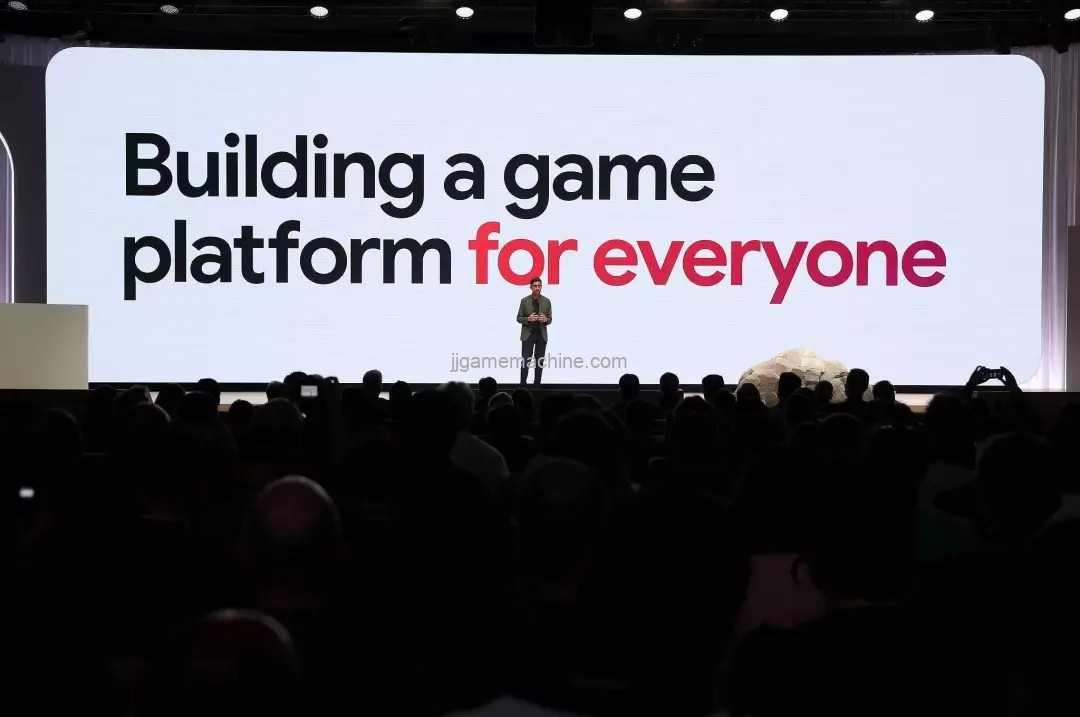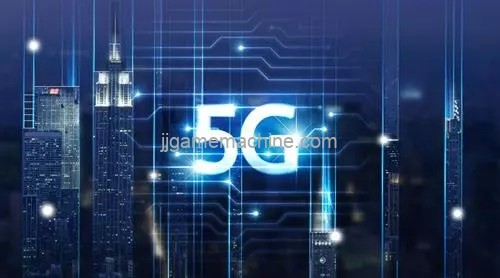5G is not a vent, nor a panacea.
The industry's imagination of 5G began as early as the 4G era.
Regardless of the establishment of standards, the improvement of technology, or the issuance of licenses, every action of operators, terminal vendors, and chip vendors is transmitting a signal that 5G will come into reality from imagination.
According to Intel's How 5G will Transform the Business of Media & Entertainment, which is commissioned by Ovum, the world's leading telecommunications industry consulting firm, by 2025, 5G will generate more revenue than 3G/ 4G revenue; by 2028, the net income of the 5G market will reach 200 billion US dollars.
The outbreak of the Chinese entertainment industry is particularly evident. The 5G Entertainment Economics Report predicts that the average monthly traffic of 5G users will increase by 7 times in the next 10 years, and 90% of them will be consumed by video. By 2028, only consumers' spending on video, music and games will nearly double, and the global total will reach nearly $150 billion.
For example, in the field of film and television, according to the Ericsson 2018 Mobile Report, the share of video in global mobile traffic will climb from 60% today to 74% in 2024. Between 2018 and 2024, total mobile data traffic is expected to increase five-fold. It is expected that 5G networks will carry 25% of them at the end of the forecast, and the user's pursuit of high-resolution content will drive the growth of the film industry.
In the media field, if you benefit from the development of wireless communication technology, people get information from the 2G text, to 3G pictures, and then to 4G video, 5G will also provide a new way of media interaction, the report said. By 2028, immersive and new media applications will reach unprecedented scale, generating more than $67 billion in revenue each year, including immersive media on behalf of AR/VR, cloud games, etc. New media represents a new application for 5G technology in the future, possibly These include autonomous vehicles in entertainment, 3D holographic display, and tactile equipment.
In the past two years, the most popular entertainment applications for “5G landing”. At the beginning of 2018, the Pyeongchang Winter Olympics used sensors, and the 360-degree panoramic camera was equipped with a 5G network, allowing the audience in the live VR area to experience the event immersively, and let the audience in front of the screen watch the live broadcast from the athlete's first perspective; MWC 2019, 5G Terminal manufacturers made their debut, OPPO showed the cloud game "Soul Ability 6" developed by Bandai Nangong Dream. The experiencer can use the mobile phone to connect the gamepad to operate this PC game with the minimum graphics card configuration requirement of GTX 1050; one month ago At the recent Google I/O Developers Conference, the offline interaction in the 5G section was almost the subject of AR entertainment applications.
A more mainstream view is that the game entertainment field will be one of the first and most important "footholds" of 5G.
Speed redefines "playability"
The International Telecommunication Union (ITU) defines eight key capability indicators for 5G technology: peak rate of 20 Gbps, user experience data rate of 100 Mbps, spectrum efficiency 3 times higher than IMT-A for 4G standards, and mobility up to 500 km/h. The delay is 1 millisecond, the connection density reaches 10Tbps per square kilometer, the energy efficiency is 100 times higher than IMT-A, and the flow density reaches 10Mbps per square meter.
From the host, to the PC, to the rise of mobile games and the return of host power, the interactive real-time response speed of data transmission is the basis of all "gaming" experiences.
According to estimates by Dutch data research firm NewZoo, more than 2.4 billion people will play games in 2019, and the gaming industry will generate $148 billion in revenue. Corresponding to the considerable market prospects is the need for game developers to constantly improve their own qualities.
In the past, due to the limitation of 4G transmission power, game developers had to discount the picture quality and product performance, and the mobile user level also preferred to accept small-volume games of tens of megabytes and hundreds of megabytes. However, with the advent of 5G, users' acceptance of big-package mobile games will increase, giving developers more possibilities to develop high-quality games.

More than 2.4 billion people will play games in 2019, and the gaming industry will generate $148 billion in revenue.
For example, the H5 game field can be divided into a broadcast-based light H5 and a heavy H5 that is close to the native app. However, heavy H5 games have high requirements for mobile configuration and network quality, resulting in smooth user experience when playing heavy H5 games. Not enough. However, this does not prove that there is no market for heavy H5 games. In 2016, Butterfly Interactive developed "The Legendary World H5" and achieved two or three million waters in just one month.
Cao Yu, vice president of Butterfly Interactive Business, also said at the first 5G cloud VR and cloud game industry forum in China that 5G will change the game form and even the overall market structure, and give H5 games a new life. According to Cao Yu's judgment, in the future 5G game market, IP will shine. As users demand more and more game screens, there will be more games with high definition and rich pictures in the 5G era.
In addition to the high-quality games that will follow 5G, the expansion of the game category also has imagination, for example, those game categories that have high requirements for real-time verification. Just as the heroes of mutual entertainment CMO Du Xinyi once said that because of the high requirements for real-time verification, there has not been a fighting game networking experience on mobile games or PCs.
And Qian Qingquan, the founder of VR content production company ifgames, has similar ideas. He revealed that for the VR offline experience store, ifgames has already built a networked system to realize remote networking in the future, such as Beijing and Shanghai, and even between Beijing and Tokyo. Real-time confrontation. Asked about what 5G can bring to the game, the game experience, Qian Qingquan mentioned the integration of the game and the live broadcast. "When watching the live broadcast, if I think you are not playing well, then I can directly enter into confrontation with you. This is what I am looking forward to."
Can cloud games come true?
4G's network speed is improved, which satisfies the video viewing experience that users play without loading and playing. Can the game do the same thing in the 5G era?
As one of the mobile phone manufacturers that are fully committed to 5G, in 2016, one plus is already studying 5G. In August 2018, one plus connected 5G network in Qualcomm's US laboratory environment. At this year's MWC, one plus also showed 5G mobile phones equipped with 855 and cloud games based on 5G network operation.
Cloud games are not a new concept. The starting point is to start with the first cloud game, Crysis, launched by OnLive at the 2009 GDC Game Developers Conference. In 2018, with the discussion of 5G, the concept of cloud games has been mentioned.
Around 2011 and 2012, a number of companies that have become cloud game platforms have emerged in China, but most of them have "dead". Cloud games have extremely high requirements for network transmission quality. Previously, due to the limitations of network technology, 4G or Wi-Fi networks could not support the data transmission volume of 3A games. The "pioneers" did not solve the problems of transmission delay and game jam. As one of the players who entered the cloud game in 2011, Boyun chose to deploy the cloud platform to the operator's computer room, first ensuring the bandwidth requirements of the cloud game.
Just like Gaikai, another company that used to do cloud games in the early days, it sold Sony because it could not carry a lot of high bandwidth. Domestic cloud game players face the same dilemma. “Deploying a cloud platform on the public network, renting bandwidth, and renting an idc machine room are far more expensive than those collected from tens of thousands of users.” One executive who sees Boyun Said.
Cloud game providers are burdened with high server operating costs, and the conversion to the user side is a high game price. For example, the previous domestic cloud game companies implemented membership monthly or on-time charges. Insiders of a cloud game platform also confirmed that their fees for cloud games are charged on a per-time basis. "The standard service costs $3 per hour and the high service rate is $4 per hour."
As cloud computing and distributed computing mature, the cost of the original high server is effectively reduced, and 5G can solve high-latency transmission efficiency and unstable network environment, cloud games are facing golden opportunities in the past decade. .

Google releases cloud gaming platform Stadia | Google
According to Alphawise statistics, at least 10% of non-gaming users in the world currently do not play games due to high hardware costs. For mobile users, the most urgent pain point for cloud games is that mobile native users have the opportunity to contact only PCs and hosts. Run 3A games on the game, so users get rid of the shackles of expensive hardware.
Moving the game to the cloud, players do not have to download and install the game, which means reducing the power consumption of the mobile terminal, not only do not have to worry about the phone configuration, and do not have to worry about the phone life. According to the prediction data given by a game studio, a mobile phone with a built-in 4000mAh battery can guarantee 5-6 hours of play time at 1080p resolution using cloud technology.
With the popularity of smartphones, the mobile game market has expanded rapidly. In 2012, in the online game industry in China, PC client games accounted for 72.3%, and mobile game market share was only 13.1%. By 2017, PC client games fell to 29.5%, while mobile game market share rose to 62.1%.
The 5G network can overcome the shortcomings of slow network speed and high latency in the cloud game environment. The portability of the game terminal reduces the user threshold, so that more and more users will embrace the cloud game.
VR and AR resurgence
The "Top Player" movie shows us the future of game interaction, as long as you wear a VR device, you can enter a virtual world. In this virtual world, timid people in reality can also become superheroes. However, at present, the VR industry is still facing a lot of technical challenges. Most of the VR heads in the market are still unable to achieve the ideal human-computer interaction experience, and only serve as games and video displays.
"Low experience" is one of the keys to the weakness of the VR market. In a virtual environment, dizziness occurs when there is a delay of more than 20 milliseconds between motion and vision. The increase in screen resolution also imposes new requirements on network transmission. Two main players in the VR market, PC VR/Host VR and Mobile VR, the former represents a high user experience, high cost and high usage threshold; the latter represents a low usage threshold, low hardware performance and content quality. How to solve the "difficult situation" of VR hardware?

VR and AR are revolutionary technologies that can completely subvert traditional human-computer interaction content
The concept of cloud VR in 2017 began to appear in people's eyes. Cloud VR is the real-time transmission of VR content through the network, cloud data processing and image rendering, VR only bears the display function. Some heavy VR games need to wait until the 5G era, through cloud computing, edge computing power.
Just because everything is handed over to the cloud, the amount of head-on calculations is reduced, energy consumption is reduced, and the form is gradually lighter, solving the problem of wearing comfort, and the cost of the VR terminal is also reduced.
Qian Qingquan regards the arrival of 5G as a kind of "hardware upgrade". "First of all, VR backpack is a big problem. Ifgames has 25000 pieces of wearable equipment, 5G will help to run games with VR all-in-one, take off backpacks, and finally users only It takes 2,000 yuan to enjoy the same experience."
The price is too expensive is another user threshold, and VR has not been able to run through the business model. According to Bo Yun’s executives, “90% of the content companies visited last year, 90% of them have died. But this year there are many more to join, because operators have entered the market and are pushing this matter vigorously.” To see how many 5G pilots can fall this year, as long as the 5G is down, it will keep up with 5G cloud VR and 5G cloud games. Because the road is widened, the operators have no particularly good business to run. 5G Cloud VR, 5G Cloud The game is another bandwidth-intensive project."
4G and its previous communication era are all aimed at achieving better interconnection of people. With the leap to 5G, it will be the beginning of the interconnection between people and things and things. The entrance to human-computer interaction has also expanded from mobile computers to home devices, wearable devices, cars and more. Huawei's "Top Ten Application Scenarios in the 5G Era" white paper mentions that VR and AR are revolutionary technologies that can completely subvert traditional human-computer interaction content.
A lot of data prove that 5G landing will bring benefits to the VR market. ABI Research estimates that the total AR and VR market will reach $292 billion by 2025 (AR is $151 billion and VR is $141 billion). According to IDC, the VR gaming market will grow by 75% in 2019. CCID Consulting has predicted that after the large-scale commercial use of 5G networks, shipments of VR and AR equipment will reach 10 million units.
5G is not a vent, nor is it a panacea
5G real landing is the key to everything.
According to the 3GPP network standard development process previously published by 3GPP, the 5G network standard is divided into two versions, R15 and R16. As the first version of the 5G standard, it is divided into two sub-phases. The first sub-phase 5G NR non-independent networking (NSA) feature was completed in December 2017, and the second sub-phase 5G NR independent networking (SA) standard Completed in June 2018. R15 mainly determines the relevant standard technologies for 5G commercialization, and meets some 5G requirements (enhanced mobile broadband eMBB and ultra-reliable low-latency URLLC); R16 will complete the complete 5G standard that meets all ITU (International Telecommunications Union) requirements, fully satisfied The requirements of various scenarios such as eMBB, URLLC, and large-connection low-power scenarios mMTC.
Since the 3GPP announced that the follow-up standard work was postponed for 3 months, the R16 standard was also postponed, and the standard version containing the full version of the R16 ASN.1 code will be completed by June 2020. HTC's internal staff said that through the cloud to achieve PC content transfer to the VR machine, HTC is technically achievable, the key depends on when 5G landing, when to let the C-side users use.
Which networking mode the operator uses to build 5G also directly determines the speed and cost of 5G network construction. China Telecom's 5G white paper in 2018 has already reflected that China Telecom will adopt an independent networking solution to achieve true 5G. From the test of China Unicom in various places, most of them focus on non-independent networking tests. China Mobile is testing both types of networking. It is speculated that China Mobile is more likely to adopt non-independent networking, but it is also embarking on an independent networking solution.
Independent networking is an end-to-end 5G standard. In contrast, a large-scale network of non-independent networking is still 4G, but it only partially supplements 5G to enhance bandwidth in hotspots. The 5G theoretical peak rate is 20Gbps, but this transmission speed only exists in the full-body 5G network under the independent networking. As for the non-independent networking 5G network, the improvement of the network transmission is not as big as imagined.

On June 6, the Ministry of Industry and Information Technology officially issued 5G commercial licenses to four companies.
Bi Qi, chief engineer of China Telecom Research Institute, believes that 5G is 10 times better than 4G in terms of 5G performance indicators, but there is actually a certain distance. "The peak of 5G is 20Gbps, but this is related to the input bandwidth. To use the higher frequency bandwidth, the current domestic plan is to prepare 100M for each operator. The 20Gbps rate is still not available, and it will take some time. Another parameter has some challenges that are energy efficiency. The energy efficiency goal is 100 times, but at the moment we still have a long way to go in terms of energy efficiency."
Whether 5G can bring subversive changes to the game field, in addition to technical challenges, it is also necessary to see whether the content side is also ready for quality and rich game content.
It is reported that there are only a few dozen games on the Bo Yunyun game platform. In the words of the above-mentioned bloggers, "the real VR game content is scarce." "Operators use subsidies to make users cheap or even free. The way, when playing VR content, content developers can make money, and the virtuous cycle industry is slowly getting up." Even if operators, VR equipment terminal vendors, game developers start to practice, can they promote the VR market? It also takes time to test. As users' demand for heavy and high-quality games rises, the game market faces a lack of domestic 3A games, and the introduction of foreign content has a version number problem, which restricts the development of cloud games.
At present, 5G is still in the early stage of commercialization, and it is not said that 5G network standards are still being worked out, and 5G terminal equipment and terminal new products are also improving in function and performance. Ren Zhengfei also said, "In fact, human society has no such urgent need for 5G. People need broadband now, and the main content of 5G is not broadband. 5G has very much connotation. These connotations need to be more The arrival of more demand will take a long time." This is especially true for the gaming industry.






